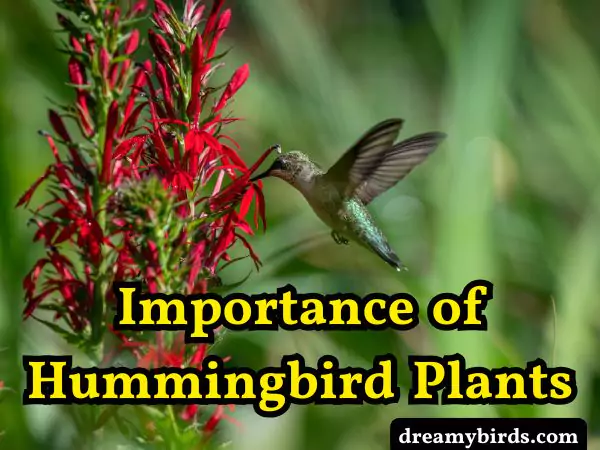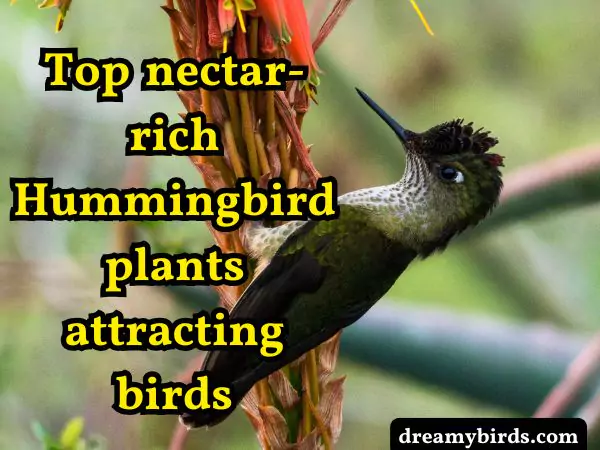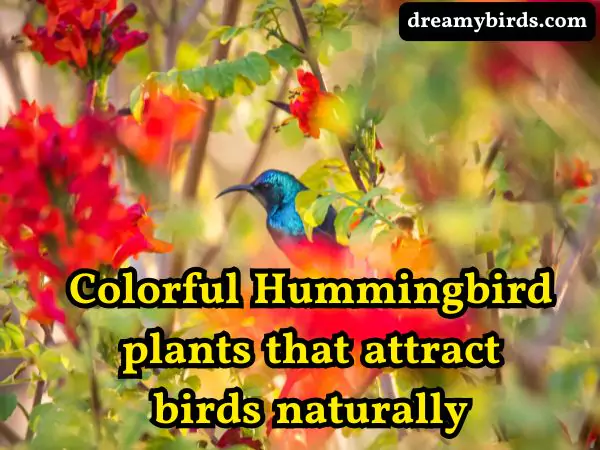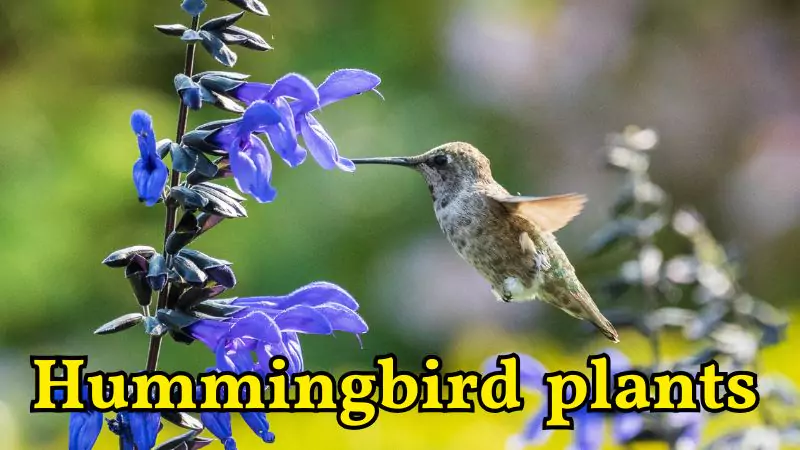Introduction
Are you looking for some plants that will attract birds to your garden? Then Hummingbird plants could be your best choice. These plants bloom small colorful flowers, each drop of which contains sweet nectar. And the smell of that nectar attracts many colorful birds, including hummingbirds.
These plants are not only beautiful, but also easy to care for. They do not require much fertilizer or care, they grow properly if they only get enough light and water. You can even plant these plants in a tub on a small balcony in the city. And once the flowers bloom, you will see the birds dancing every day.
Through our service, you will get suitable plant advice, planting methods, and tips to ensure flowering. We will help you how to create a vibrant bird-filled garden.
If you want to create a natural environment around your home or office, contact us now. We will give you the plant that attracts birds the most — Hummingbird plants.
Importance of Hummingbird Plants

Hummingbird plants are small flowering plants that are particularly attractive to birds. Birds drink nectar from these plants, which they need for their strength and well-being. The hummingbird plant is like the heartbeat of nature, connecting us to nature and spreading the sound of music around us.
These plants maintain the balance of the environment, increase soil fertility, and serve as a habitat for various birds. With their small flowers and colorful leaves, these plants make nature more beautiful and lively. Therefore, Hummingbird plants are very important not only for beauty, but also for food and shelter for birds. Planting these plants in the garden will make your surrounding environment lively and alive. Therefore, Hummingbird plants are very valuable for those who love nature.
Best Hummingbird plants for your garden today
If you want to increase the arrival of birds in your garden, then it is very important to choose the Best Hummingbird plants. Hummingbird plants are those plants full of flowers that provide sweet nectar to birds. These plants enhance the beauty of the garden and at the same time attract birds. Apart from blooming beautifully in the garden, Hummingbird plants act as a food source for birds. Choosing the right plants will make your yard alive, vibrant and full of life.
Some of the Best Hummingbird plants such as Trumpet Vine, Bee Balm and Cardinal Flower are very popular today. They are easy to grow, bloom all year round and attract the attention of birds. Choose plants according to the climate and soil of your garden. By using these plants, you can blend in well with the environment.
Top nectar-rich Hummingbird plants attracting birds

Hummingbird plants are basically plants that have a lot of sweet nectar in their flowers. Birds are interested in eating this nectar. By placing Top nectar-rich Hummingbird plants in your garden, you can easily attract birds.
- Trumpet Vine
- Bee Balm
- Cardinal Flower
- Salvia
- Coral Honeysuckle
These plants contain a lot of nectar, which is one of the main features of Hummingbird plants. The flowers of these plants are colorful, fragrant and very popular with birds. Due to the presence of Top nectar-rich Hummingbird plants, many types of birds come to the garden. Therefore, they must be included in Hummingbird plants.
Easy-to-grow Hummingbird plants with simple care
If you want plants in your garden that grow very easily, Easy-to-grow Hummingbird plants are the best choice for you. These plants do not require much care, so even novice gardeners can easily cultivate them. There are many species of Hummingbird plants that grow very well in the house or on a small balcony.
Although Hummingbird plants are easy-to-grow plants, proper care is essential to get good flowers. Regular watering, adequate light, and occasional fertilization should be given. If the soil type of the garden is good, these plants grow and bloom quickly. With Easy-to-grow Hummingbird plants, your garden will be green and colorful. These plants have fewer diseases and pests and adapt to the environment very patiently. Therefore, Easy-to-grow Hummingbird plants are a very good option for those who are just starting out.
How to care for Hummingbird plants properly
Although caring for Hummingbird plants is easy, following some rules can yield good results. Here are some important aspects for caring for Hummingbird plants:
- Give enough water, but do not let it get too wet.
- Good sunlight is needed for flowering.
- Remove rotten leaves and buds occasionally.
- Apply light fertilizer in summer.
If you follow these rules, Hummingbird plants will remain healthy and give good flowers. Hummingbird plants will grow on their own, but their beauty will increase with regular care. So, ensure regular moderate water, light and care.
Native Hummingbird plants for shady backyard areas

If you have an area in your yard or garden where there is less direct sunlight, then you should choose Native Hummingbird plants that grow well in shady areas. These plants can grow well in shady backyard areas.
There are some species of Hummingbird plants that bloom in low light and attract birds. Therefore, Native Hummingbird plants are very important for shady areas. It is important to plant them to keep such areas of your garden alive.
Planting Hummingbird plants in shady areas increases the abundance of greenery in the garden and provides a safe haven for birds.
Also, the flowers of Native Hummingbird plants in shady areas last longer.
Hummingbird-favorite plants survive and thrive even in dark corners or low-light areas.
There are many types of Hummingbird plants that thrive in low light. For example:
- Coral Bells
- Columbine
- Foamflower
- Bleeding Heart
- Jack-in-the-Pulpit
These Hummingbird plants are able to bloom in shady areas. Hummingbird plants like a little less light and a cooler environment. Using them in shady backyard areas makes the garden green and lively. This feature of Hummingbird plants is ideal for small or shady yards.
Colorful Hummingbird plants that attract birds naturally

The biggest advantage of Hummingbird plants is their colorful flowers that attract birds. Colorful Hummingbird plants bring life to your garden. These plants bloom in different colors of flowers—red, orange, yellow, pink, and purple. These flowers contain sweet nectar that attracts birds.
If you want to attract birds naturally, planting Colorful Hummingbird plants is perfect. The color of Hummingbird plants is attractive to birds. Birds come to them because of the shape and color of the flowers. Therefore, having colorful plants in the garden increases the number of birds.
Both the beauty and naturalness of your garden are enhanced by Colorful Hummingbird plants.
Perennial vs annual Hummingbird plants differences explained
Perennial Hummingbird plants bloom every year, while Annual Hummingbird plants bloom only once. Perennial plants are long-lasting, so they last a long time in the garden. Annual plants bloom for a short time, but produce colorful flowers.
Perennial plants are more durable and require less effort as hummingbird plants. Annual plants are easy to plant and produce fruit quickly. By combining these two types of hummingbird plants in the garden, you can get flowers all year round.
Year-round blooming hummingbird plants for small spaces
If you have little space, it is still possible to add life to small spaces with year-round blooming hummingbird plants. These plants grow easily in tubs or small spaces. Year-round blooming hummingbird plants bloom for many months of the year. These plants bring color and beauty to small spaces.
These species of hummingbird plants refresh the environment and attract birds. Year-round blooming hummingbird plants make your garden lively. Best container Hummingbird plants growing easily in small spaces
Some Hummingbird plants that are easy to grow in containers are:
- Petunia
- Zinnia
- Lavender
- Marigold
- Fuchsia
These plants are known as Year-round blooming Hummingbird plants. They can be kept in containers at home, on balconies or terraces. Hummingbird plants create a lively atmosphere in small spaces.
Read More:
- How Long Do Pigeons Live? Know The Pigeon Lifespan
- How Long Do Robin Live? Average lifespan of a Robin
Conclusion
Loving nature means taking care of Hummingbird plants. These plants are a source of peace not only for the birds, but also for yourself. Every morning when you hear the call of small colorful birds, you will understand — you have chosen nature, nature has also chosen you.
These plants adapt easily, whether in a tub or in the garden. They bloom with care, and flocks of birds roam around with their sweet scent. And you will enjoy those moments in your soft morning or quiet evening. Plant Hummingbird plants today, and begin a vibrant, nature-filled journey.
FAQs
What are the best Hummingbird plants for beginners?
Bee Balm, Trumpet Vine, and Salvia are easy to grow and care for Hummingbird plants for novice gardeners. These plants bloom quickly and require little care, making them great for beginners.
How often should I water my Hummingbird plants?
Hummingbird plants need moderate water. Usually, 2-3 times a week is enough, but it is better to water a little more in the summer. Water when the soil is dry.
Do Hummingbird plants grow well in pots?
Yes, Hummingbird plants grow very well in pots. Pots are suitable for those who want to garden in a small space. The plants stay healthy if they have good drainage and enough light
Which Hummingbird plants bloom all summer?
Hummingbird plants such as Salvia, Bee Balm, and Cardinal Flower are ideal for blooming all summer. These plants bloom regularly throughout the summer.
Are Hummingbird plants deer-resistant?
Many hummingbird plants, such as Trumpet Vine and Salvia, have an unpleasant odor to deer, so deer usually do not eat them. But complete protection is not guaranteed.
What time of year should I plant Hummingbird plants?
Spring is the best time to plant Hummingbird plants. The plants can grow quickly and bloom in the summer.
Can Hummingbird plants survive winter?
Many perennial Hummingbird plants survive winter. However, if the winter is very cold, the plants should be covered, especially newly planted ones.

